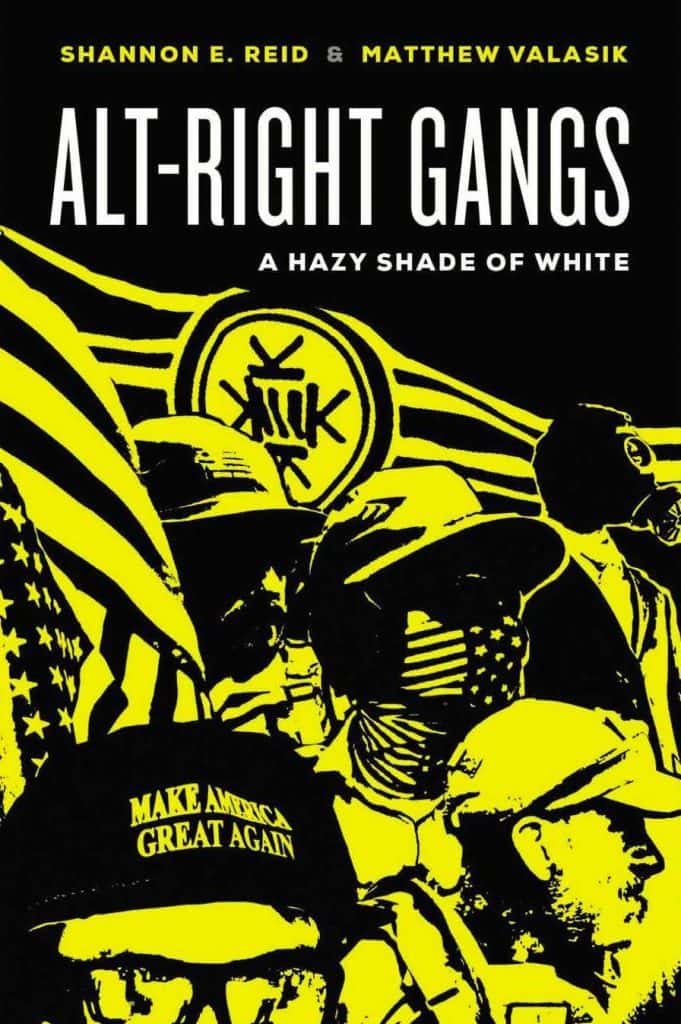This guest post is part of our ASC blog series published in conjunction with the meeting of the American Society of Criminology in San Francisco, CA, November 13-16.
By Shannon E. Reid and Matthew Valasik, authors of Alt-Right Gangs: A Hazy Shade of White (forthcoming, Fall 2020)

The public resurgence of the White Power Movement (WPM) in Charlottesville, Virginia was a turning point in United States history. It was at this moment when the WPM, under the banner of the Alt-Right, blipped back on to the radar of mainstream Americans. The level of vitriol and barefaced far-right messaging, with such chants as “blood and soil,” “Jews will not replace us” and “White lives matter” along with brandishing flaming tiki torches evoked the nightmares of a Ku Klux Klan rally. These images shocked many, as public displays of blatant white supremacy had receded from our collative memory in America’s alleged “post-racial” society. Unfortunately, as those studying the far-right would attest, the WPM never disappeared, with the Alt-Right being the WPM’s newest visage.
A subset of the WPM is youthful, and these newly branded Alt-Right gangs, having evolved from supposedly nonaligned groups into semi-structured groups that participate in crime and violence, have caught law enforcement, policymakers, and academics off guard. This has left agencies ill-prepared to understand why youth join these groups, and how to deal with them. Yet, for those who study conventional street gangs, and the violence they engage in, what is being witnessed today with Alt-Right gangs is not unique. It is because of this overlap that gang researchers are placed in a unique position to demystify these groups.
The purpose of Alt-Right Gangs: A Hazy Shade of White (forthcoming, Fall 2020) is twofold. First, we provide a necessary and timely discussion of present-day youth-oriented groups in the WPM, what we term Alt-Right gangs, and how they need to be explicitly incorporated into the current paradigm of street gang research. This goal is centered on providing academics, students, policymakers, and law enforcement with a better understanding and, ideally, knowledge that can be harnessed for combatting membership into the groups. Second, we develop a pathway forward to steer future research in studying Alt-Right gangs, along with their members.
Alt-Right Gangs: A Hazy Shade of White is the first text to conceptualize Alt-Right youth groups and situate their existence within the framework of street gangs. As gang researchers, guided by our interdisciplinary training, we synthesize research across an array of academic literature including criminology, sociology, communication studies, social movements, political science, history, cultural studies, religious studies, and computer science to stress the necessity to deal with Alt-Right gangs seriously and refrain from disregarding these groups as an extremist subculture or youthful phase.
Despite the desire to treat Alt-Right groups as nothing more than atypical or radical youth, there is a substantial subset of Alt-Righters that are involved in delinquent, street-oriented youth groups (e.g., racist skinheads). It is these youth, and their Alt-Right gangs, that this book endeavors to understand. While the aim of Alt-Right Gangs: A Hazy Shade of White is to examine the overlap between Alt-Right gangs and conventional street gangs, there is much research needed to fully understand the concurrence between these groups, especially considering how to apply gang prevention, intervention, and suppression programs and policies to these youth.

